19. Piano Blues
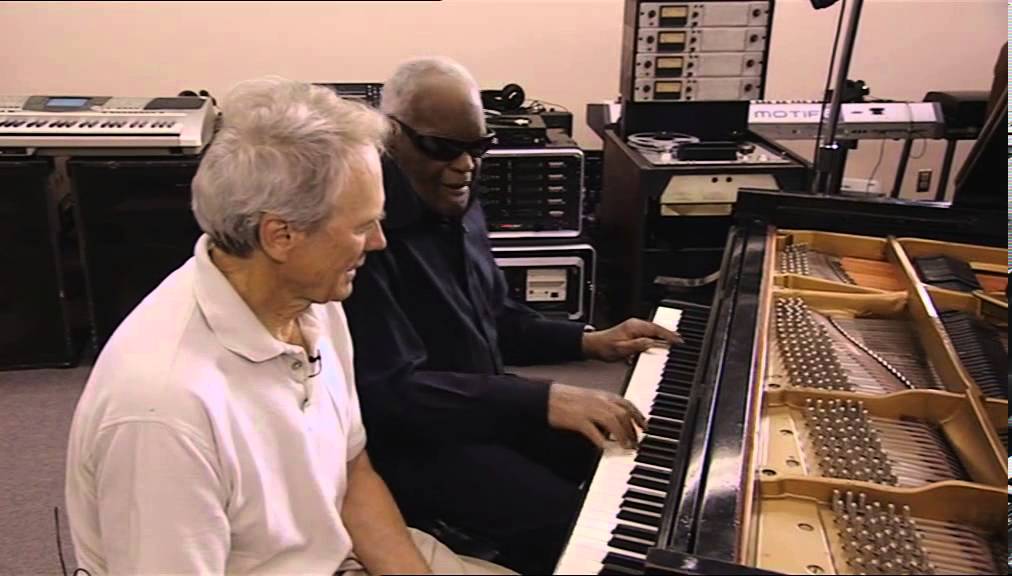
“Piano Blues” is part of a seven-part documentary series called “The Blues,” which, as one could expect, explores this musical genre, its history and its pioneers. It’s essential viewing for any blues fan and each episode is accompanied by a legendary director, from Mike Figgis, Wim Wenders and Martin Scorsese.
Eastwood’s episode is the last, which details not only his personal affection for the genre, but also focuses on blues played through the piano, which just like the soulful guitar riffs, has been instrumental to its power. Eastwood meets several musical legends, listening intently to where they came from, what inspired them, and why the music matters so much to them.
Even those who aren’t a fan of the music could appreciate Eastwood’s passion and might even be swept away by it. That’s the strength of this documentary – even a non-fan of blues might be willing to listen more intently to the music, hoping to feel the same things that Eastwood does. It’s also adorable to see Eastwood geek out a little bit and be enthralled by the company he’s with.
Eastwood himself is an accomplished pianist, having composed musical scores for several of his movies. Music has always been important in his life; we can see that in his beautiful Charlie Parker biopic and we can see this up close and personal here.
Even if the subject doesn’t interest you, I’d highly recommend you watch this film. Blues is an art form that is struggling and deeply appreciated in American culture – which Eastwood rightfully states is purely American. In order to reach the kind of fame in the music industry these days, you can’t do it the traditional way via big album sales as music can now be obtained freely, sometimes illegally through the internet.
You have to use social media or perform as much as you can. For blues artists, musicians who always struggle to gain mainstream attention, it especially affects them. We need reminders from the great artists among us to never forget about the foundations of all the great art we take for granted these days.
18. Pale Rider
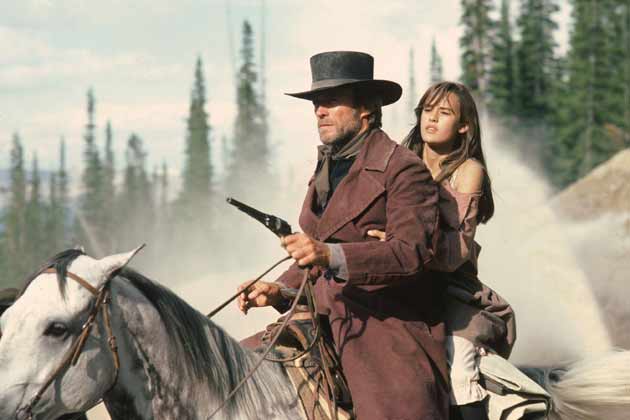
Aside from the intriguing mysticism surrounding the film’s main character, you won’t find much new in this Clint Eastwood western. It has all the familiar tropes: there’s the lone gunslinger aiding a group of people as they are being assaulted by a band of gun-toting madmen. There’s a wonderful callback to classic Sergio Leone, with men in long coats and cowboy hats waiting for a shootout. Despite the generic plot, this film is wonderfully entertaining. It’s an example of a filmmaker who knows exactly what he’s doing, who has honed the genre and is having fun with it.
A group of prospectors are being hounded by a group of violent goons under the hiring of greedy miner Coy Lahood (Richard Dysart). When during one of these attacks they murder the small dog of Megan Wheeler (Sydney Penny), a 15-year-old girl, she buries the dog and prays for a miracle. Wouldn’t you know it, during her prayer, a stranger comes riding into town, a man who we only come to know as Preacher.
Compared to Eastwood’s entourage of gunslingers, Preacher is more gentle to others – except to the bad guys, of course. He elicits empathy for the plight of these prospectors, almost as if he can look straight into their hearts. There’s a deeper mystery to the character; we never really know where he came from or what his real name is. There are six bullet wounds in his back.
When Lahood talks to a corrupt Marshal by the name of Stockburn (John Russell), he mentions his dead-eyed stare. Stockburn suddenly looks frightened, almost as if he remembered an old daring enemy. When Stockburn finally comes face to face to the Preacher, he yelps ”it’s him!”
Eastwood has said that Preacher is a ghost. In my eyes, he’s a ghost of all those who were unjustly murdered. In the film we see people suffering injustice, losing faith in the prospective dreams. The Preacher is there to bring faith into the hearts of these people and bring justice, sometimes through death, to those who deserve it.
Aside from a rather uncomfortable scene where Megan asks Preacher to make love to her, the film is a great ride from beginning to end. Eastwood, in my opinion, has never looked cooler than in this movie. It’s filled with great performances, though the characters are not as memorable as his other westerns, such as “The Outlaw Josey Wales.”
Richard Kiel, the giant who would become famous as Jaws from the Roger Moore James Bond movies, plays Club, one of Lahood’s goons who eventually has a change of heart. It’s sad that his character eventually disappears, because it would have been great to see him in the end, joining the prospectors.
“Pale Rider” is a fun ride from beginning to end, even if it offers little that is new. It’s a tight, traditional western that stands proudly among Eastwood’s magnificent western oeuvre.
17. Space Cowboys
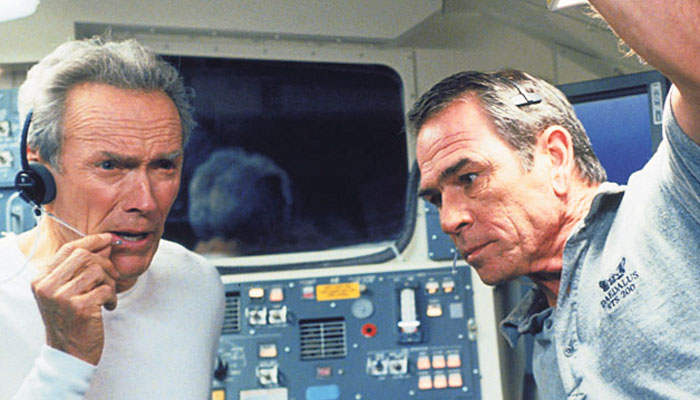
The old generation knows it better than the young generation, a common trope in Eastwood films. In this highly entertaining and humorous film, NASA is calling an ancient astronaut by the name of Frank Corvin (naturally Eastwood) to stop a renegade satellite. He is the only one with knowledge of the old guidance system that was used to lift the device into space. Corvin isn’t originally from NASA but from the Air Force, and he’s bitter about having lost the chance to go into space as space travel was taken over by NASA.
Corvin is willing to help NASA on one condition: if he and his old crew can go into space. His old crew consists of William ”Hawk” Hawkins (Tommy Lee Jones), Jerry O’ Neil (Donald Sutherland) and ”Tank” Sullivan (James Garner). The final act is them going into space to stop this satellite from crashing onto earth. Naturally, as we can expect from such a film, a lot of things go wrong during this mission.
This ridiculous premise never feels too silly because of Eastwood’s direction and the superb script. Eastwood is not known for being a special effects guy, but the scenes in outer space are all convincing even if there is the initial chuckle of seeing Eastwood floating in space in an astronaut suit. Though it has to be said that the best part of the film is the initial training sequence.
The four main leads all do an excellent job, though Jones remains the standout and his character has the most heartfelt arc of the four. The supporting cast is excellent, from Marcia Gay Harden, James Cromwell and Courtney B. Vance, but the standout of all of them is William Devane as the flight director.
The film isn’t supposed to be as dramatically poignant as Eastwood’s later films, but it’s a lot of fun throughout the running time. The final shot of the film even manages to be moving, so much so that you actually forget how silly all of it really was. It’s probably one of Eastwood’s most entertaining films and remains to be one even after many repeated viewings.
16. High Plains Drifter
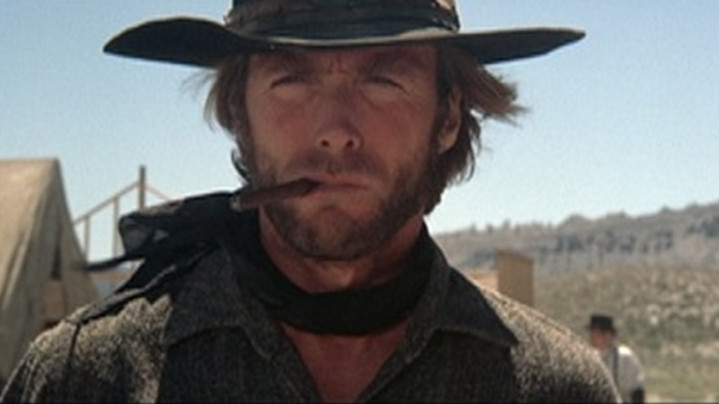
Eastwood’s second film might seem like a return to the familiar – a western where a nameless drifter arrives in a small town and shoots a bunch of bad guys. But it becomes apparent in the first 15 minutes that this drifter is a much more sinister man. After gunning down some obnoxious douchebags from a barber chair, the Drifter heads out and bumps into a woman.
When this woman starts calling him names, he grabs her and brutally rapes her inside of a barn. Immediately we begin to realize that this man is not a hero. This is a man who just happens to enjoy doing the devil’s work – and sometimes that involves shooting evil people.
There is the possibility that the Drifter is the retribution of a man brutally murdered by Stacey Bridges (Geoffrey Lewis) and the rest of his gang of outlaws. He might even be the same man. Just like Pale Rider, there’s something otherworldly about this gunslinger. But unlike the Preacher from Pale Rider, this Drifter isn’t interested in giving people solace. It might look like a Spaghetti Western but it doesn’t feel like one. There’s no grand score by Ennio Morricone. There’s vengeance, but it isn’t about justice – it’s about raising hell because people are fucked anyway.
The film has a nihilistic tone, comparable to “Unforgiven” perhaps, but even in “Unforgiven” there were far more decent men on screen than in “High Plains Drifter.” This is a film that seems to take place in an entirely different plane of reality. It takes place in a town where most of the people had long lost their souls, as they looked on as a good person was brutally murdered.
The Drifter changes the name of the town to Hell and maybe that’s perfectly appropriate. It delivers what we expect from such a film but it isn’t interested in conventional thrills. It’s a film that shows that Eastwood has honed the tricks from his mentor Leone, but now he’s subverting them in his own devilish ways. It’s a ghoulish, sometimes uncomfortable but highly entertaining ride into hell.
15. The Bridges of Madison County
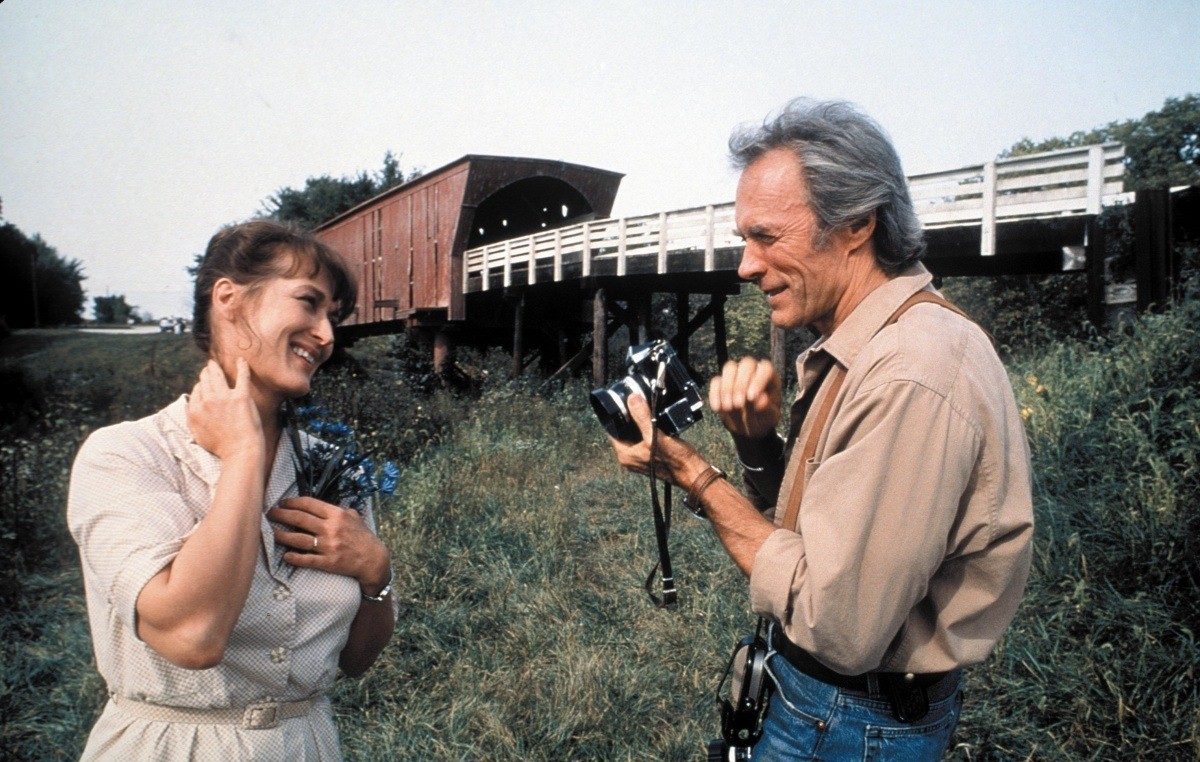
For all of Eastwood’s image as a tough-guy filmmaker, he’s proven himself to be remarkably adept with cinematic romance. Apart from the numerous examples in his other films, this film proves this more than any of them. A good romantic story all hinges on the chemistry between the two leads. Chemistry is a difficult thing to describe; two people either have it or they don’t. Lots of romantic films fall apart because they miss this essential component. You can still have a great movie, even if the chemistry doesn’t really work; a good example is Edgar Wright’s “Scott Pilgrim vs. the World” with the lackluster chemistry between Scott and Ramona – but you won’t really care if they get each other or not.
When it came to adapting Robert James Waller’s bestseller, “The Bridges of Madison County,” the chemistry between the two leads had to work. The novel was simmering with passion, longing, hidden sensuality. There had to be that quiet moment where the two leads look at each other just a little too long, so that the viewer feels that the sparks are flying.
This is exactly what happens between Francesca (Meryl Streep) and Robert (Clint Eastwood). The movie is essentially a flashback of the children of Francesca, who rummage through her belongings after her death. What they find is a series of scribbles, from diaries and letters, that proves that Francesca had fallen for another man, a man they’ve never heard of.
The film then goes back into the past, in those four poignant days where Francesca met Robert, a traveling photographer, and fell in love with him. Before this, we can see that Francesca longs for passion, that the quiet life of the wife of an Iowa farmer was not something she dreamed about. Robert has that freedom she yearns for. But in the end, she decides she cannot run away with him; it would cause too much pain for her husband and children.
The film has been hailed by many as being better than the source material, as Waller’s prose has often been criticized for being extremely corny. The Iowa scenery is beautifully brought to screen, where you are both amazed by its beauty but also feel the alienation Francesca feels by living there. The film was a massive success, receiving several accolades. The film is very slow but reasonably so. It focuses on the small moments between these people: the accidental touch, the nervous talk, the quiet stare. It’s the culmination of these small moments that eventually leads to a romantic affair.
But in order to enjoy this film, you have to be a romantic dreamer. If not, this film probably wouldn’t work for you. The little poem that Robert recites in the film says it all: ”The old dreams were good dreams. They didn’t work out but I’m glad I had them.” This is a film about an old dream that never worked out, and those dreams are both sad and beautiful at the same time.
14. Absolute Power
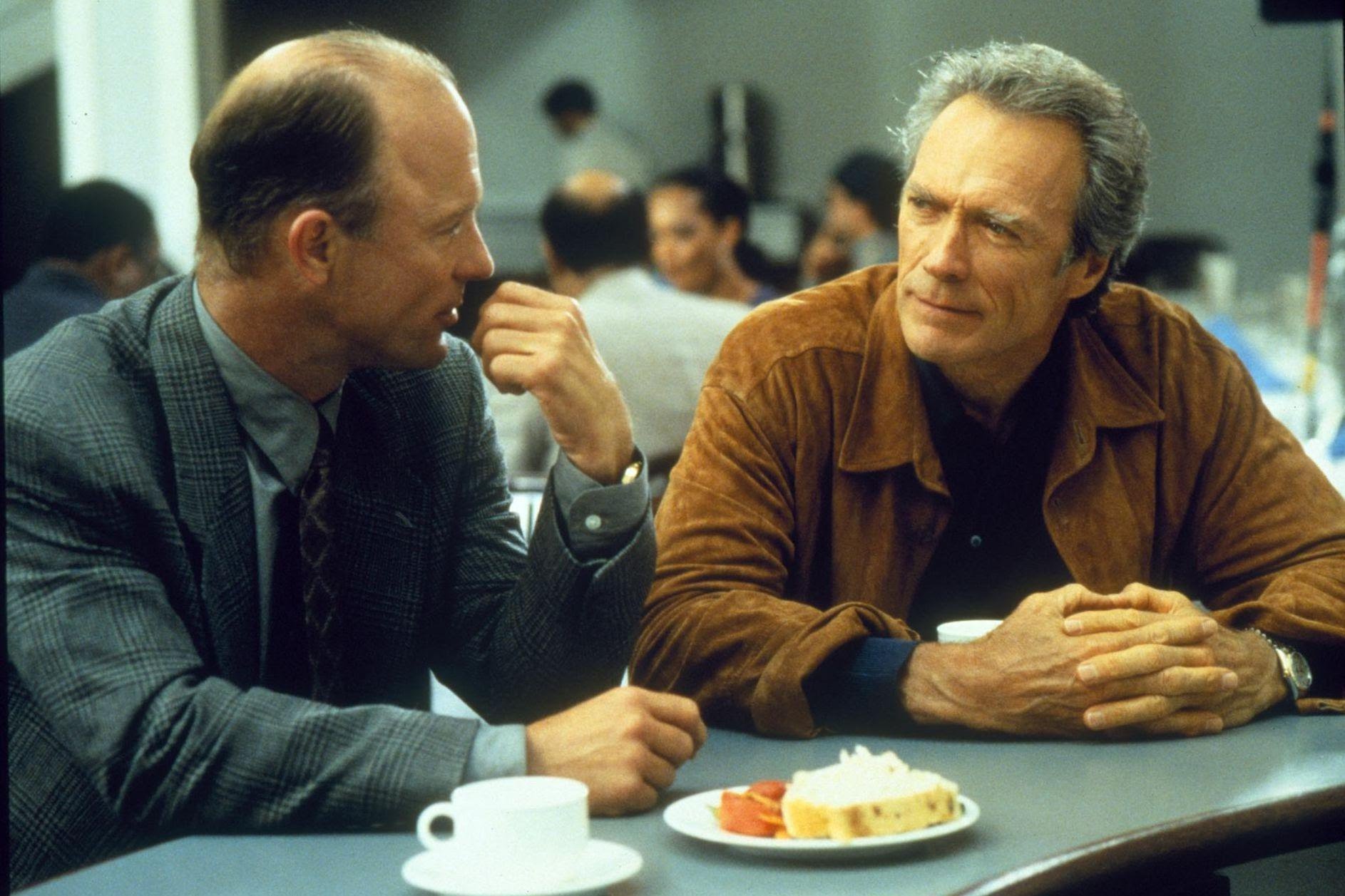
Absolute power corrupts, we know this, we’ve seen this countless times. Not just in movies but in respected offices. It’s so easy – do a little favor here and you get a little favor back. Make a mistake and make it go away. Nobody’s the wiser. In “Absolute Power,” professional jewel thief Whitney, during a heist, witnesses the President of the United States (played to slimy perfection by Gene Hackman) sexually assault a woman. When she defends herself, she is shot dead by the president’s Secret Service agents (played respectively by Scott Glenn and Dennis Haysbert). Whitney can report this, but who will believe a convicted felon over the popular President of the United States?
The great William Goldman pens the screenplay and it’s filled with sharp dialog and well-rounded characters. It helps that the cast is once again perfect. A young Laura Linney plays Whitney’s daughter and it’s her relationship with him that gives this film its emotional core. Ed Harris plays Seth Frank, a detective who investigates the incident. E.G. Marshall plays the husband of the murdered woman and has some of the film’s best scenes. Judy Davis plays the corrupt Chief of Staff and finally there’s Richard Jenkins, who plays a small but memorable part as a hired assassin.
It’s a testament to Eastwood’s organized method of directing that this film was finished far ahead of schedule with a few million still left over from the budget. Knowing the excessive amounts of money being thrown away in an Adam Sandler film, you wish directors like Eastwood would be around more to show how it is really done.
The film is ultimately helped by Goldman’s taut screenplay, which, by Eastwood’s request, differs much of the original source material. Fans of the original novel by David Baldacci might miss out the original hero of the novel, Jack Graham.
The ending especially is perfectly satisfactory and ties up everything perfectly. It’s a great companionship between a great screenwriter and an equally great director, and it might be one of Eastwood’s best thrillers.
13. Honkytonk Man
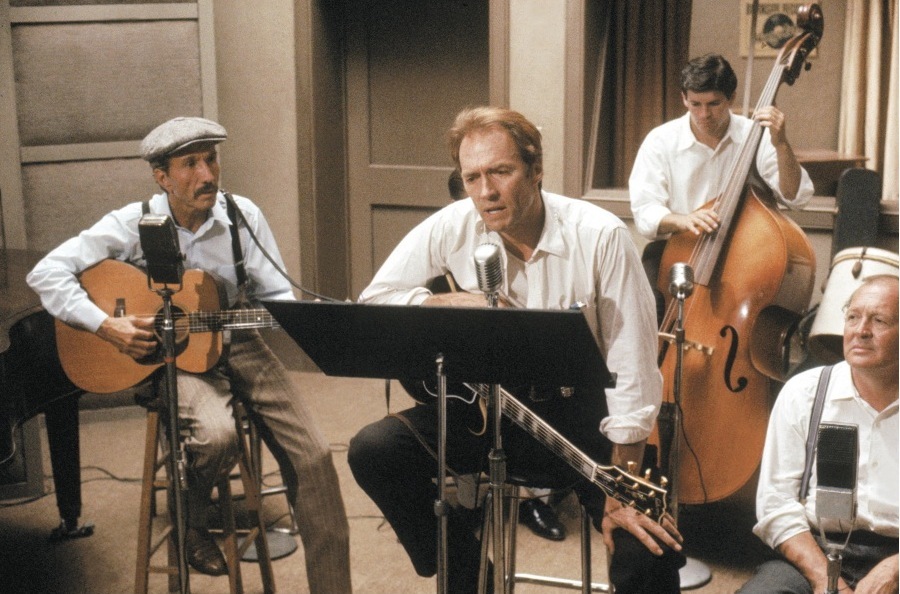
Not everyone struck gold in America. Many hopeful prospectors had eventually come to realize that the great American dream did not apply to them. The ones who were lucky, born or otherwise, began to peddle this dream, realizing that this illusion was profitable for business. If people think that everyone, if they only work hard enough, can make it big, it gives people a reason to dismiss the poor and jobless, proclaiming them to be lazy.
If people think they can never manage to go beyond their original station in life, there will be less of an incentive to work and that’s not good for business. The American dream is a great con, a necessary con perhaps. Not just to get the economy going, but to give many Americans hope, as the harsh conditions and extreme boredom of their job constantly assaults their spirits.
Then the Great Depression came and suddenly there was enough reason for America, as a collective, to doubt this dream. That’s where “Honkytonk Man” is set – in the Depression following Red (Eastwood), a musician, as he tries to make his music career happen. His family sends his nephew Whit (Kyle Eastwood, yes they are related) to join him on the road, so that he can watch over him and make sure he doesn’t get into too much trouble. Throughout the film, Red has a nasty cough, which, as an experienced cinema-goer, you know spells trouble.
Eastwood plays his own music and does his own singing. His imperfect voice perfectly matches the character who suffers from tuberculosis but who, despite this, never gives up on his dream. The eventual manner in which he can eventually live a semblance of this dream is beautifully moving. It involves Red in a studio, suffering badly from his disease, nearly killing himself for the music. Seeing the fellow singers help the ailing Red in the studio is one Eastwood’s most moving scenes of his career.
Even if the ending is quite the tearjerker, the film provides humor as both Red and Whit engage in various outlandish shenanigans, including a jailbreak and the theft of chickens which causes their car to stink of chicken shit.
The people in this film, despite living in harsh conditions, are not constantly miserable. They exude good humor at times, they are used to survival, and have come to appreciate the little things they have. Like so many of Eastwood’s period films, the attention to detail is magnificent. The people here look dirty, as if they have lived long in this world.
Clint Eastwood loves America. I don’t mean this in the meaningless bile that politicians spew, I mean this as in that Eastwood adores its history and its multi-faceted culture. We can see all through his filmography, as he explored and portrayed so many diverse cultures. We can see that in his appreciation of music, from blues to jazz. We can see that in his moral outrage when the system lets its citizens down. In this film, he pays tribute to the hardworking men who had to fend for themselves in a time and place where there were few opportunities.
It’s a wonderfully gentle film about the quintessential American dreamer who has every reason to give up on his dream, but as he faces oblivion, refuses to give up doing what he loves.
12. Mystic River
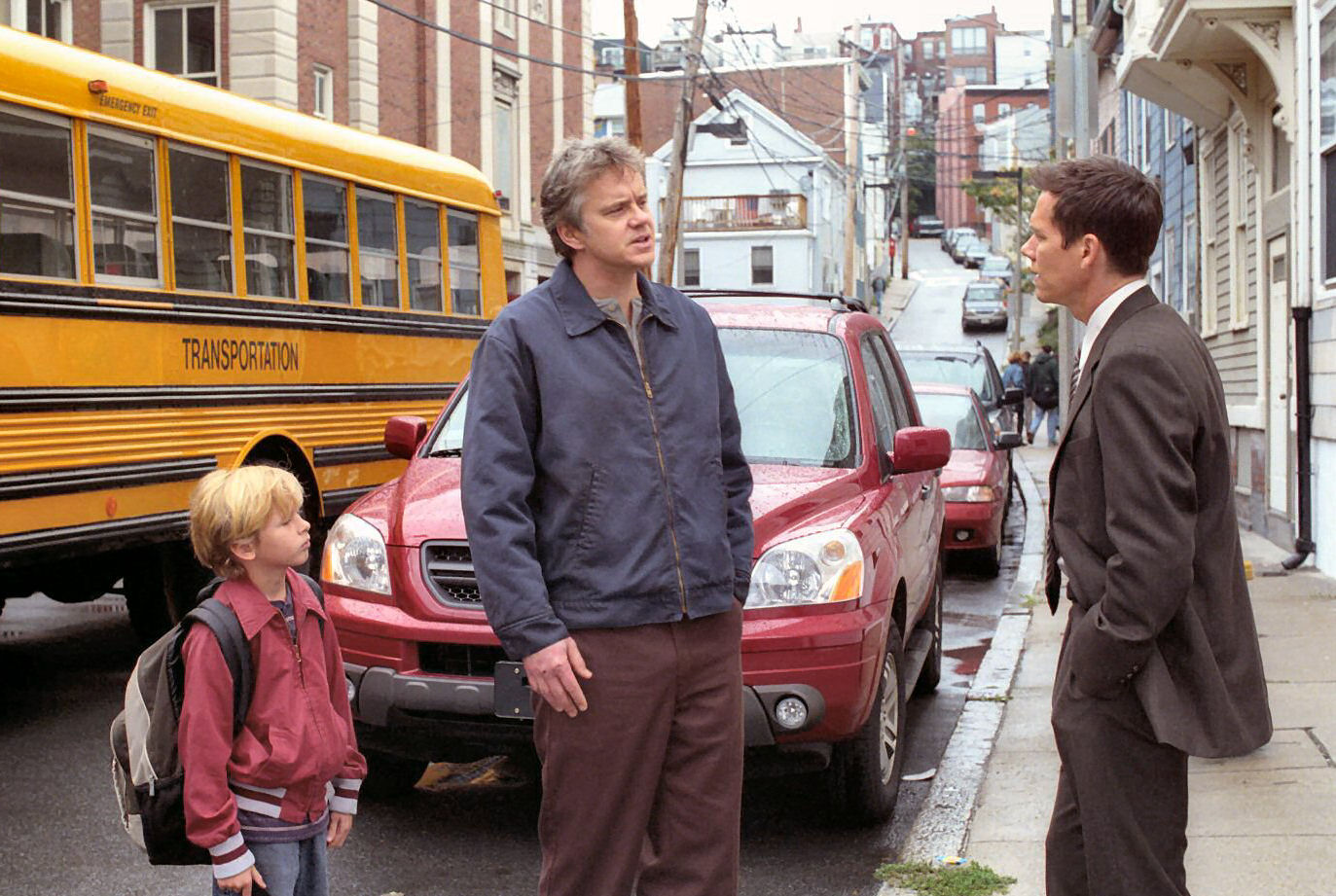
If you hurt a child deeply enough, you don’t deserve to roam the streets. There’s a special fire that burns for those who destroy the spirits of children; it’s the fire that rages on, never lets you go, refuses to kill you. You deserve to be forgotten while you are burning…
These proclamations are understandable when we hear about the monstrous things done to children, such as Dave Boyle, who was a sweet boy and could have been a great man, if the monsters didn’t have his way with him. There is also the guilt of the boy’s friends who were there, who saw Dave being taken away inside the car. One boy grows up to be a detective (Kevin Bacon), the other became a thug (Sean Penn), while Dave (Tim Robbins in arguably his greatest performance) became a mere shell of a man, constantly trying to retain his sanity.
Based on Dennis Lehane’s novel, “Mystic River” is a deeply moving but unrelenting film on the traumas from which we never recover. When the daughter (Emmy Rossum) of the thug is found murdered, the detective and his partner (Laurence Fishburne) are on the case. But on this same night, Dave comes home covered in blood, raving to his wife Celeste (Marcia Gay Harden) that he might have killed someone.
The outcome is as tragic as one could expect. It’s a great adaptation of the novel, even if one wishes certain elements could be there on the screen. But it’s all there: the culture of the intimate and boisterous Boston neighborhood filled with dirty language and hard drinking. There’s seething guilt and a desperate need for revenge, and there’s so much pain and so many necessary lies. It’s all on screen, and Eastwood makes us feel everything. It’s not easy viewing but with evil so foul, we are glad we could see it through the cinematic talents of Clint Eastwood.
11. A Perfect World
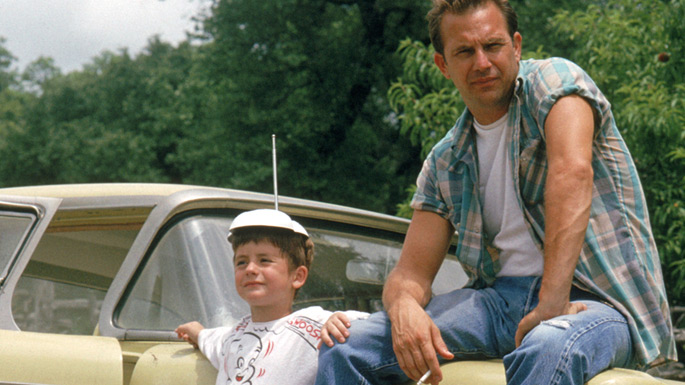
You know there ain’t no such thing… The perfect world exists in our dream, a place we visited somewhere in our childhood. It was warm, it was safe, there were lots of cuddles. But we can’t stay there; eventually we will have to go back to the real world, where things are complicated, where things are all screwed up. Things are too complicated, nothing is equal, there’s tragedy in abundance. We don’t want to go there but we are being pulled somehow, by a force we don’t understand.
Perhaps that’s the thing we call fate. Or maybe it’s just common sense, the biggest motherfucker of them all. We go back every now and then but the place becomes weaker and weaker, the more we leave. Eventually when we try to go back, we get lost along the way. We can never get back there again. The only times we will see this place is in the eyes of our children…
That’s what Robert ”Butch” Haynes (Kevin Costner), the anti-hero of “A Perfect World” sees in the eyes of his hostage, the eight-year-old Phillip (T.J. Lowther). The boy is in a perilous situation, forced to traverse America next to two convicted murderers, the other one being the unhinged Terry Pugh (Keith Szarabajka). On their tail is guilt-ridden Texas Ranger Red Garnett (Clint Eastwood), who has a personal connection with Butch.
Despite these complicated adults, the heart of the story remains Phillip. Being taken from his religiously devout mother who is a strict Jehovah’s Witness, he finally receives the chance to be as silly as his heart desires. Butch gives him this chance, wanting to see the light in the boy’s eyes. He could have had a boy like that if things turned out differently, but that will never be. Sometimes you just don’t second chances, it’s not that kind of world. In a perfect world, everybody gets second chances. Sometimes a glimpse of this other world, like the sight of a joyous child, has to be enough.
“A Perfect World” is a slow-burning moving film with three great leading performances. Costner’s performances have always veered from quality. Sometimes he cares, sometimes he really doesn’t. You have downright laughable ones such as starring turns in “The Untouchables” or “Robin Hood: Prince of Thieves,” and then you have performances like these where you are reminded of why he became a movie star in the first place. It’s a perfect role for him – a stoic character with deeply seething violence below the surface.
It bursts out when the wrong button is pushed; there comes sudden savagery, the point of no return. But there’s a good heart in there too, a heart that had be buried in order for him to survive in this world. If a man is beaten long enough, you can’t blame him for burying his heart.
It’s one of Costner’s best performances starring alongside a talented child actor who perfectly imbued the innocence of a child without the phony cuteness that adults perceive children to have. The languid pace of the film perfectly suits it; like a sedated and less pompous Terrence Malick, Eastwood revels in the little moments, instead of the bursts of shocking violence.
This is one of the true gems of Eastwood’s filmography, but it’s not his greatest one. He’s still had many other great films ahead of him…
10. The Outlaw Josey Wales
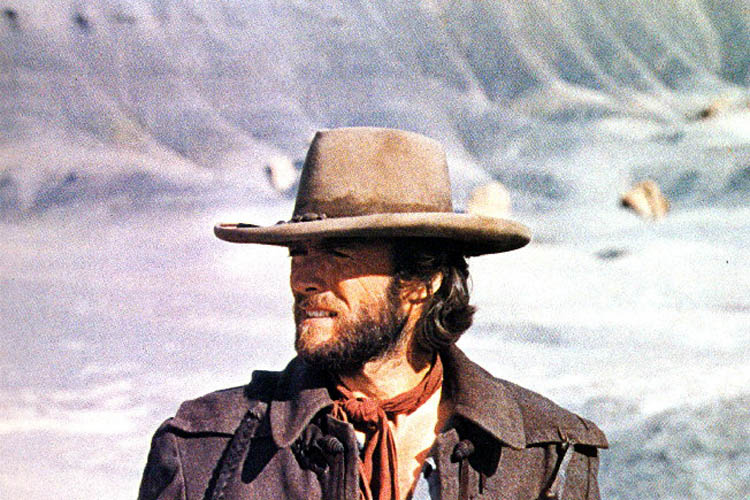
They say God laughs when you announce your plans. And when your great plans are derailed by tragedy, if you listen closely, you will hear the devil snickering. It doesn’t matter whether you can bear it or not. The world doesn’t run on your feelings. You are forced to either reinvent yourself or check out early.
This is what happened with a Josey Wales (Eastwood), who we see in the film’s brutal opening turn from a simple Missouri farmer and family man into an effective mercenary for the group of Confederate bushwhackers. He doesn’t care about the cause; he cares about revenge since the murderers were a bunch of pro-Union militia known as Redlegs.
When the war is over and Wales is expected to give himself up to the very Pro-union militia that murdered his family, he refuses and becomes a wanted man. Wales’ former commander Captain Fletcher (John Vernon) is forced to aid the Redlegs in hunting Wales down. Along the way, Wales is forced to gun down several bounty hunters and opportunists who yearn for the bounty on his head. But in doing so, he also manages to befriend a rich assortment of colorful characters who, just like Wales, have nothing left to lose, and join him in his violent odyssey for revenge.
The fact that the hero of this film joins the Confederacy and the villains of the film are from the Union might offend some people. But there are good and bad people on both sides, profiteers and savages. The pro-Union militia led by Captain Terrill (Bill McKinney) doesn’t care about liberating people from slavery; they just want to be free from being prosecuted for their war crimes and to continue in their evil ways unabated.
The film certainly doesn’t shy away from the indiscriminate savagery of its time. We see the subjugation of the Native Americans. We meet a Native American named Lone Watie (Chief Dan George) who muses about the loss of his identity when he became ‘civilized,’ and Wales saves a Native American woman from rape. Wales doesn’t give one ounce of shit about “the cause.” This is a film about a lonely man’s thirst for vengeance and of a group of misfits coming together in a world where companionship seems on short supply.
It’s the relationship between these characters that is the true highlight of this film. There are plenty of scenes where the lone gunman kicks ass, but we’ve seen this many times before in an Eastwood western and that’s not what makes this film special. It’s the supporting cast, the new family that Wales makes along the way which gives this film an emotional edge compared to his many other westerns (besides “Unforgiven,” of course). All of these characters were victims through the course of the film, sometimes by their mere ethnicity or their gender, but all of them, through their association with Wales, reclaim their autonomy. They all have their memorable moments and you hope all of them will make it through to the end.
It helps that every character seems perfectly cast: from Chief Dan George as Lone Watie, a character who provides many insightful and humorous monologues; to Paula Trueman playing the prejudiced but good-hearted Grandma Sarah; and finally John Vernon, who commands the screen every scene he’s in. Vernon is an actor who does everything with his eyes and it’s put to great use in this film. In Captain Fletcher’s eyes, you see the constant conflict between his allegiance to his country and his respect and friendship of Josey Wales. All of this culminates in a great arc and a moving final scene.
Finally, there’s Eastwood as Josey Wales, While his performance is filled with the usual Eastwood tropes, he isn’t the nameless gunman in this film. This is a real person, someone who lost everything, someone who, as he states at the end of the film, ”died a little during that damn war.” A man with a death wish, who expected to be one of the many casualties of war. Over the course of the film, Wales receives the chance to be a father figure of sorts to all the friends he makes along the way.
Every now and then, you see his tough facade give way for the gentle parent he could have been had he been given the chance. At the end of the film, as the wounded Wales rides off into the sunset, and we don’t know whether he will collapse from his wounds or start anew. In the inferior sequel, “The Return of Josey Wales,” we can assume he did – even if that film pales in comparison, Michael Parks does a very good job as the title character.
But assuming that this is the last time we see the character, his fate is left up to us, the viewers. Having been declared dead, he doesn’t need to fear bounty hunters, lawmen or opportunists anymore. He’s free to reinvent himself once again. I’d like to think he will find his way home, with his new family, that they will tend to his wounds and save his life. I’d like to think he will receive a chance to become a husband and father again. Perhaps this is all just a dream; perhaps men like Josey Wales will never find peace again, just like so many soldiers who died a little inside.
But I’d like to think there’s salvation for these men, even if all seems lost. We need to have hope in this world. Even in the darkest of times, in the most savage of places, we need to have hope.